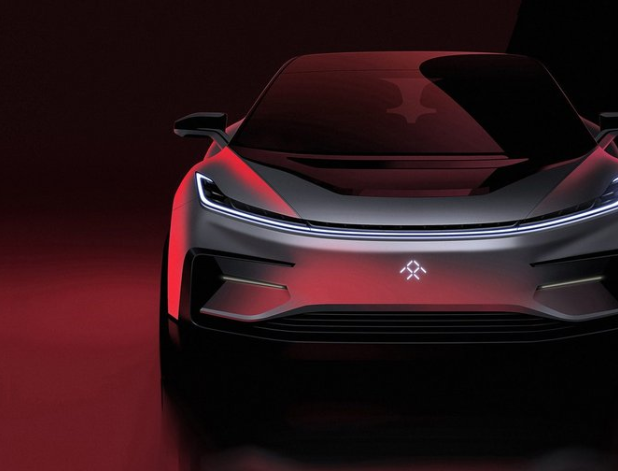
Faraday Future Designer: Shaping the Future of Electric Vehicles
Faraday Future designer plays a crucial role in creating the innovative electric cars that the company is known for. These designers help bring new ideas to life, focusing on advanced technology, stylish designs, and sustainable solutions for the future of transportation. They are at the heart of making Faraday Future’s vehicles not just functional, but also exciting to drive.
Being a Faraday Future designer means more than just drawing cars. It’s about combining creativity with cutting-edge technology to make electric cars that are better for the environment and more enjoyable for drivers. In this blog, we will explore what it takes to be a Faraday Future designer and how their work is shaping the future of the automotive industry.
What Does a Faraday Future Designer Do? Understanding Their Role
A Faraday Future designer plays an essential part in the company’s vision of revolutionizing electric vehicles (EVs). Their main job is to create designs that blend cutting-edge technology, sustainability, and style. These designers are responsible for not just making cars that look good but also ones that are efficient and environmentally friendly.
The designer’s role goes beyond just aesthetics. They work with engineers and technical experts to ensure the design is practical and functional. A Faraday Future designer helps transform concepts into real cars, making sure everything works seamlessly. They focus on the customer experience, ensuring that every detail of the car enhances comfort, ease of use, and eco-friendliness.
Being a Faraday Future designer means embracing new technology and new materials. They work on everything from the car’s body shape to the interior features, creating a product that reflects the company’s futuristic and sustainable values. Their work is critical in making Faraday Future one of the leaders in electric vehicle design.
Faraday Future Designer: Innovating Electric Cars for Tomorrow
Faraday Future designers play a big role in shaping the future of transportation. Their designs help create electric cars that are not only eco-friendly but also packed with advanced technology. These cars are designed to perform better than traditional gasoline cars, with faster charging, longer battery life, and smarter features.
The goal is to create cars that look amazing and are fun to drive. Designers work on creating sleek, futuristic shapes that reduce wind resistance, making the cars more efficient. They also consider how the car will feel for the driver, focusing on comfort and ease of use. Faraday Future designers are part of a movement that’s changing the way we think about cars and the environment.
How They Are Innovating:
- Advanced Technology Integration: Designers focus on integrating the latest technology, from smart driving features to better battery systems.
- Sustainability: Faraday Future designers ensure that their cars are designed with sustainability in mind, using eco-friendly materials wherever possible.
- Customer-Centered Design: The design process is about improving the driving experience, ensuring comfort and ease for every user.
The Skills Every Faraday Future Designer Needs to Succeed
Being a Faraday Future designer requires a unique set of skills. Designers need to be creative and think outside the box. They also need to be familiar with the latest technology in the automotive world to ensure their designs meet future needs.
A strong background in design, engineering, and technology is crucial. Faraday Future designers are experts in automotive design but also have a good understanding of sustainable energy, electric vehicle components, and smart technologies. This combination of skills helps them create cars that are as functional as they are beautiful.
Some of the key skills needed include:
- Creativity: Designing cars that look great and perform well.
- Technical Knowledge: Understanding how electric vehicles work and how to make them better.
- Problem-Solving: Overcoming design challenges to make cars efficient and user-friendly.
Behind the Scenes: How Faraday Future Designers Create the Future of EVs
Faraday Future designers work together with engineers to bring their ideas to life. The design process involves sketching out ideas, creating prototypes, and testing how different parts of the car work together. Every decision they make is based on the goal of making the car more sustainable, efficient, and enjoyable to drive.
Designers also focus on creating a strong brand identity for Faraday Future. They work hard to ensure that the company’s vision is represented in every vehicle they create. This means that not only the car’s performance but its look and feel must also stand out.
The Design Process Includes:
- Brainstorming Ideas: Designers come up with new concepts that push the limits of technology and style.
- Prototyping: Creating models to test out ideas before building the final product.
- Collaboration: Working with engineers to ensure that designs are practical and safe.
Conclusion
In conclusion, Faraday Future designers are shaping the future of electric cars. They combine creativity and technology to make cars that are not only eco-friendly but also fun to drive. Their work is important because it helps bring new, smarter, and cleaner vehicles to the world. With their innovative designs, they are helping make the planet a better place by creating cars that use less energy and are better for the environment.
As we look ahead, Faraday Future designers will continue to push boundaries, creating electric vehicles that are faster, smarter, and more sustainable. Their role is crucial in the electric car revolution, and as they work with engineers and other experts, they will keep designing cars that change the way we think about transportation. Faraday Future’s vision for the future is bright, and their designers are leading the way.
For more information, explore these resources:
- Scroll Blogs
- Crypto30X
- Crafters Gin
- Insider Ways
- Mating Press
- Sphere Magazines
- Blog Newz
- Blog Ansicht
- Ikonisch Blick
Archives
Calendar
| M | T | W | T | F | S | S |
|---|---|---|---|---|---|---|
| 1 | 2 | 3 | 4 | 5 | 6 | |
| 7 | 8 | 9 | 10 | 11 | 12 | 13 |
| 14 | 15 | 16 | 17 | 18 | 19 | 20 |
| 21 | 22 | 23 | 24 | 25 | 26 | 27 |
| 28 | 29 | 30 | 31 | |||

Leave a Reply